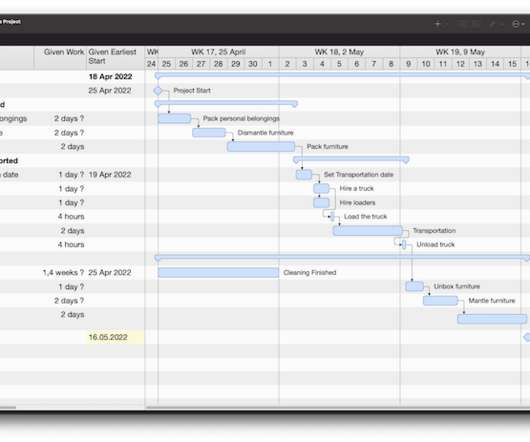Theory of Constraints: A Guide for Project Managers
ProjectManager.com
NOVEMBER 29, 2018
While the theory of constraints is typically used in manufacturing, it can be helpful in controlling most any project. Think of it like the old axiom, “A chain is no stronger than its weakest link.” He focused his theory on project management with another book, Critical Chain , which came out in 1997.



















Let's personalize your content